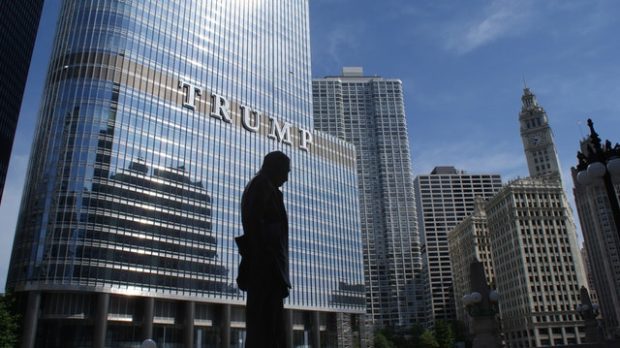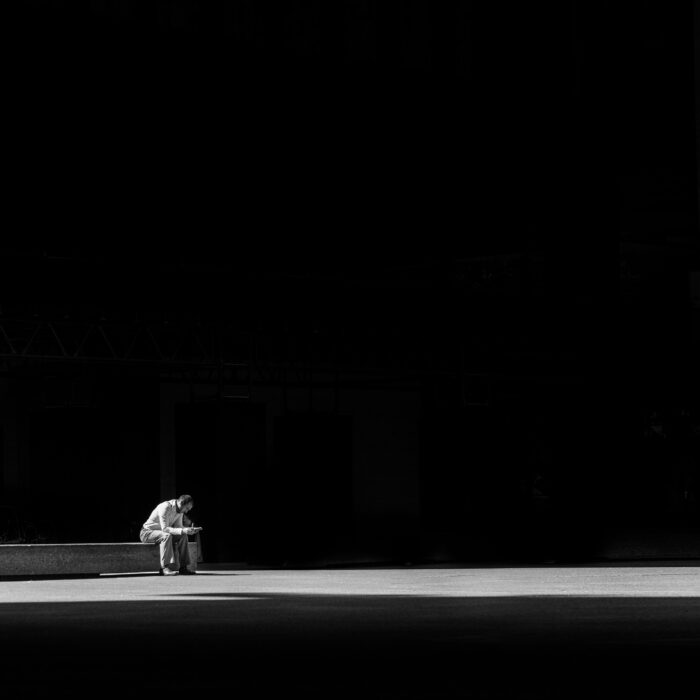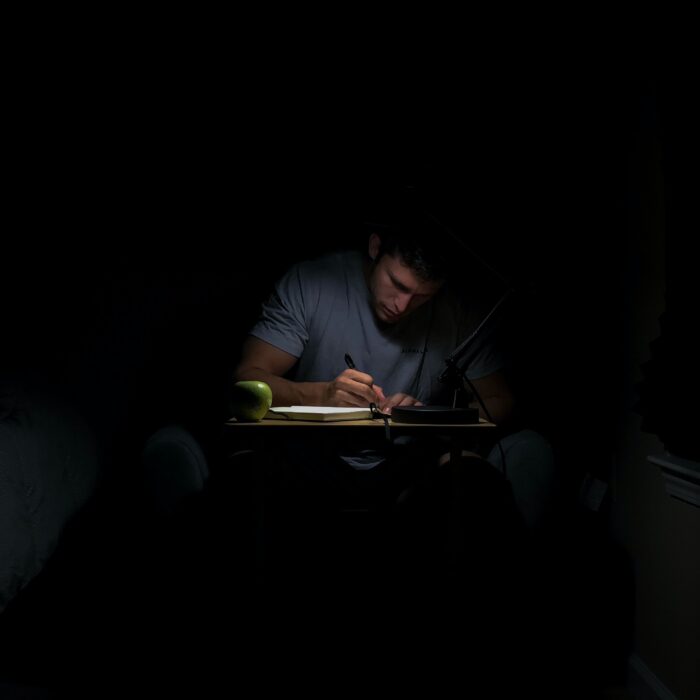You have no items in your cart. Want to get some nice things?
Go shopping
The cool images that we see on TV draw us in. Their siren voices say, “Forget about everything else. Look at me! Look at me! I’m all there is!” Since Donald Trump is so much a creature of television, it’s easy—seductive for some people—to isolate him from what has gone before. This is what American individualism does, after all: it teaches us to isolate one person from another.
But what if we tie ourselves to the mast of sober thought, as Odysseus does in The Odyssey when the sirens tempt him? What if we remind ourselves that nothing comes from nothing? If that’s true, then Trump must have come from somewhere. Since—to put it mildly—he’s not an original thinker, then he must have had a predecessor, somebody whose life and work give us some larger understanding of him and what he does.
What we are looking for is another New Yorker, another narcissistic man who got a lot of publicity—the coin of the realm for Trump—during Trump’s formative years, the sixties, by defying the conventional wisdom about his chosen field—how to manoeuvre in it, how to present himself to the world. Since such a man understood in the depths of his being the truth of the Hollywood adage that there no such thing as bad publicity, he also understood that nothing is sacred, and that he could therefore make a lucrative career out of slaughtering sacred cows. He thus had, and exploited, the freedom to say and do whatever he felt like doing in any given moment. He cheerfully disdained such old-fashioned ideas as self-discipline and propriety.
If you think this sounds a lot like Donald Trump, you’re right. But what matters more at the moment is that it also sounds like the artist Andy Warhol. As a New Yorker, Trump surely knew who Andy Warhol was; even if they never met, the similarities between them are consistent and noteworthy. They give us a historical context that helps us understand Trump and his appeal. In an age when television has eroded distinctions such as the one between high art and popular entertainment, it makes perfect sense to juxtapose an artist and a politician.
What does it mean to say that Donald Trump is the Andy Warhol of American politics? Here’s a start: Trump’s White House is another version of Andy Warhol’s Factory, where an unmoved mover thrived on the chaos that he created. Chaos, after all, is what such a man needs to distract him from his inner emptiness. People come and go at Trump’s White House, just as they did at Warhol’s Factory. They are often deeply disturbed people (Mike Flynn, Rob Porter) whose personal weaknesses bind them into a manipulator-victim relationship that often ends in personal and/or professional disaster.
The key to the similarities between Trump and Warhol, the element that connects everything else, is narcissism. Warhol was so narcissistic that during one period in his life he carried a tape recorder around with him so that he could record his conversations. That’s a habit that would make complete sense to Trump. If there is no one—no one real, that is—outside the narcissist, then of course he cannot express empathy, compassion or understanding. If there is nothing real outside the narcissist, then every act is a performance. More than anything else, Trump is a performance artist, and understanding him as such gives meaning to many things that otherwise seem puzzling about him.
And it is of course ratings—the size of the audience—that validate the performance artist. Attention is above all what matters. As Warhol said one time, “Don’t pay any attention to what people write about you. Just measure it in inches.” Trump’s version of this principle is to obsess about the size of the crowd at his inauguration. Despite overwhelming evidence to the contrary, he believes that he, not Hillary Clinton, won the popular vote.
Mario Cuomo, the former governor of New York, once said, “You campaign in poetry, but you govern in prose.” That’s a distinction that Trump the performance artist refuses to recognise. Given his artistic sensibility, governing is boring and even annoying. For him, the essence of politics is campaigning; not governing, an attitude strikingly prefigured in the 1972 Robert Redford film The Candidate. For Trump, campaigning is an end in itself, not an activity that necessarily leads to anything. This is why he’s already appointed the manager for his reelection campaign in 2020.
We may think of Trump as the culmination of the successes, first of John F. Kennedy, and then Ronald Reagan on the campaign trail and—above all—on television. What matters for Trump is performing at rallies, and getting immediate, visceral feedback to his insults and belittling nicknames. The energy that Trump creates in these venues shows that what he does best is to bring out the worst in people.
If there is not, and cannot ever be, anything real outside the narcissistic self, this principle manifested itself in Warhol’s artistic career in his treatment of his two principal subjects—artifacts of consumer culture and celebrities. He made art out of soup cans and coke bottles because he could consume what was in them. On the other hand, celebrities were a challenge to his self-enclosed world; he couldn’t deny that Marilyn Monroe and Elvis Presley had won their fame by themselves, and had never heard of him. So he had to make them his own by reducing them to commodity status. If soup cans and coke bottles could be reproduced, then so could Marilyn and Elvis. This is the point of his double portrait of Elvis, and his large portrait of Marilyn, which shows her famous face dozens of times in different colours. Warhol couldn’t control Marilyn and Elvis, so he did the next best thing—he controlled their images.
Trump, however, is not an artist in the sense that he creates artifacts, things that can be held and seen. Although he can’t make celebrities his own, as Warhol did, he does something similar. He doesn’t control their images by manipulating them; he controls their reputations by verbal attacks. What he does involves a creative act of a sort, since he refuses to dignify other politicians by calling them by their real names. Rather, he creates degrading nicknames for them which are all the more effective because they stick in our collective memory (“Pocahantas” for Senator Elizabeth Warren; “Little Rocket Man” for North Korean leader Kim Jong Un). Alternatively, he gives his perceived enemies degrading adjectives that take on significance through sheer repetition (“Crooked Hillary”; “Little Bob Corker”). By repeating nicknames and attributes in this way, Trump neutralises potential rivals and threats by giving them a status inferior to his own. That is to say, he is doing verbally what Warhol did pictorially. Repetition is as much the key to Trump’s political success as it was to Warhol’s artistic success.
Repetition is implicit in the name that Warhol gave to his studio—the Factory. Ever since the spectacular success of Henry Ford’s River Rouge factory, American factories have been turning out replicas of the same product over and over again because workers perform the same simple operations over and over again. By calling his studio the Factory, Warhol was acknowledging the key role of repetition in his work, and doing something else as well.
In effect, Warhol was rebelling against the traditional image of the artist as someone alienated, someone removed from the everyday world. He was rebelling against rebellion, so to speak. By embracing – indeed, glorifying – the everyday world of consumer items, Warhol was rebelling against the high seriousness of nineteenth-century artists, who set great store by professionalism and dedication. Warhol would have none of that; his creative method consisted of appropriating for his own purposes what his culture, American consumer culture, gave him.
Of course, in doing this Warhol himself was not completely original. As so many American artists before him had done, he looked to Europe for inspiration, and he found a role model in another gay artist, Oscar Wilde. Wilde made a name for himself as a wit by rejecting Victorian moralising in favour of amusement, as when he said, “It is absurd to divide people into good and bad. People are either charming or tedious.” Although it’s unlikely that very many members of Trump’s loyal base have ever heard of Oscar Wilde, he did articulate a key attitude of theirs. They slavishly follow his principle that entertainment trumps—and I use that verb deliberately—morality. To a considerable extent, television defines the lives of the members of Trump’s base. Since Trump gives good television, that’s all that matters to them. This fact explains something essential about today’s political dynamics, namely that God-fearing evangelical Christians are willing, indeed eager, to forgive Trump no matter what he does. He can lie to his heart’s content as long as he does so entertainingly. Unlikely as it may seem, this attitude begins with an Irish aesthete. Although this matter surely merits further discussion, there is a clear continuity from Oscar Wilde to Andy Warhol to Donald Trump.
Warhol was an unconventional artist in the same way as Trump is an unconventional politician. If traditional politicians usually took care not to offend people, Trump revels in offending people. If traditional politicians immersed themselves in the details of policy, and consulted experts on such matters as taxation and foreign relations, Trump will have none of that. Because of his narcissism, he considers himself omnicompetent, so he cannot imagine why he should consult experts or observe protocol before making major policy announcements. (His belief in his omnicompetence also explains his practice of appointing unqualified, inexperienced people to important government positions. After all, if he is President, it doesn’t matter who occupies any of the other positions.) As one would expect of a true narcissist, he does not—and emotionally cannot—respect the expertise of others. In a logical extension of this attitude, he also does not respect the traditional separation of powers enshrined in the Constitution, and disdains formal procedures as blithely as Warhol ever did.
Warhol’s Factory was staffed—it that’s the word—by a changing group of hangers on and wannabe artists of the kind that celebrities always attract. These inhabitants of New York’s demi-monde flocked to the Factory and enjoyed the wild parties that the sixties were famous for. Although major artists as varied as Mick Jagger and Jamie Wyeth did visit the Factory, they and others with careers and minds of their own merely stopped by to experience the party atmosphere for a while, and then went their way.
Warhol’s Factory deserves our attention and takes on contemporary relevance when we realise the extent to which it anticipated Trump’s Oval Office. Trump rebels against the traditional expectations for the behaviour of politicians as consistently and in the same way as Warhol rebelled against the traditional expectations for the behaviour of artists. Like Warhol before him, Trump is a master manipulator; like Warhol before him, he uses his celebrity to attract people whom he can control. As a result, Warhol’s Factory was, and Trump’s Oval Office is, a scene of barely controlled chaos, with the daily mini-dramas of feuds and backbiting that delight and amuse people like Warhol and Trump. The resultant extraordinary turnover in the West Wing during the first year of Trump’s presidency, which includes dozens of people–some competent professionals, some not—simply has no precedent in American government. But as an environment, as a “scene,” as the members of Warhol’s entourage would have called it, it closely and in detail resembles what went on at the Factory.
Like Warhol the artist, Trump the politician claims the freedom to act and speak spontaneously, without the restrictions of schedules and protocols. Like Warhol the artist, Trump simply cannot understand that his words and actions have real-world consequences. Such demonstrative flaunting of middle-class expectations is perceived by those who cling to widely held ideas of rebellion as a sign of independence; the people who constitute his base find such flaunting immensely attractive.
It has been said that the Russians attacked the American election system by weaponising the internet. Analogously, we can say that Trump attacked the American election system by weaponising television during the 2016 campaign. (And television executives such as Leslie Moonves of CBS served as Trump’s enablers by giving him massive amounts of free television time.) It bears repeating that Americans rely on television so much for entertainment (i.e., distraction from everyday life) that a significant percentage of our population proved to be willing to vote for, and remain loyal to, a man who entertained them.
Many people who believed in Mario Cuomo’s distinction between campaigning and governing believed that Trump believed in it, too. These Trump voters are now experiencing some buyers’ remorse because they failed to realise the implications of something that Warhol said about himself one time: “I’m a deeply superficial person.” That’s another way of saying that what you see is what you get. It was true of Warhol and it was true of Trump. Trump the adroit campaigner, the glib television personality who will say anything, tell any lie, to please his audience of the moment, is all there is to him. This is why his much-anticipated pivot to presidential behaviour never happened. The history of his presidency is, and will continue to be, the history of the difficulties of applying a New Yorker’s artistic sensibility to real-life situations.




A new (at least to me) way to look at Trump. The comparison with Warhol is well laid out and certainly fits. I love the inclusion of the Warhol quotation, “I’m a deeply superficial person.”
I find this article compelling, and the analogies well-drawn. It helps me step back from the polarizing present to recall how polarizing Warhol was initially in the 1960s, and continued to be even after his death in 1987. One follow-up note: Warhol and Trump did in fact meet in person several times. See Louis Shankar’s account at hiskind.com. The two men met during the 1980s, when Trump commissioned Warhol to paint portraits of Trump Tower. That deal never materialized, and left Warhol feeling afterwards, as he wrote in his diaries, “I think Trump’s sort of cheap.”